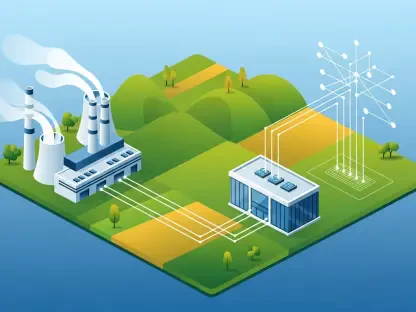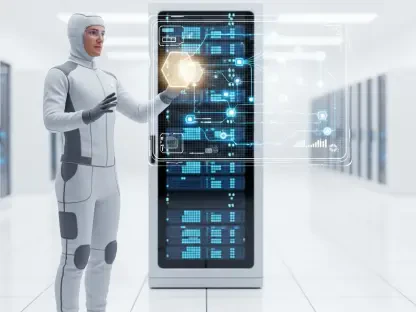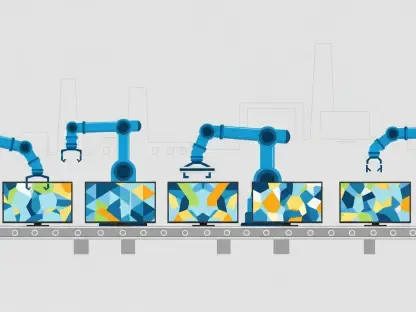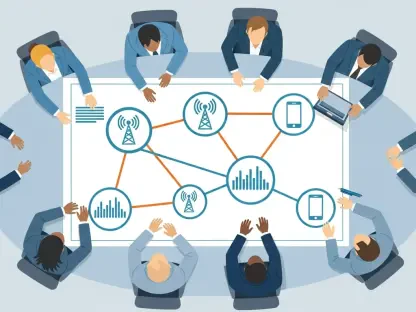In today’s rapidly evolving digital landscape, Kyivstar’s new collaboration with Ukraine’s Ministry of Digital Transformation to create a Ukrainian large language model (LLM) is an initiative of great importance. To delve into the nuances of this groundbreaking project, we speak with Vladislav Zaimov, a seasoned expert in telecommunications, whose insights into enterprise telecommunications and network risk management provide a comprehensive understanding of this ambitious endeavor.
Can you tell us more about the collaboration between Kyivstar and Ukraine’s Ministry of Digital Transformation to build the Ukrainian LLM?
This collaboration signifies a pivotal moment in Ukraine’s technological advancement. By joining forces, Kyivstar and the Ministry aim to harness the potential of AI tailored specifically for Ukrainian nuances. The model’s creation isn’t just about developing technology but about building a system that supports and enhances Ukrainian digital sovereignty and resilience, especially during these challenging times.
Why is it important for this LLM to be trained specifically on Ukrainian-language data?
Training on Ukrainian-language data ensures the LLM is deeply familiar with local semantics, cultural nuances, and specific usage patterns that might not be captured in more generalized datasets. This specificity is crucial for creating applications that truly resonate with and serve the needs of Ukrainian users, providing accurate and contextually relevant AI-powered solutions.
What are the primary goals of developing a Ukrainian national large language model?
The foremost goal is to bolster Ukraine’s digital capabilities through a model that is both secure and sovereign. The LLM aims to power various AI applications, fostering innovation across sectors like education, finance, and healthcare while keeping sensitive national data protected within the country’s borders.
How will the LLM ensure that sensitive national data remains securely stored and processed within Ukraine’s borders?
The project is committed to using state-of-the-art security protocols for data storage and processing. By focusing on infrastructure that operates entirely within Ukraine, the LLM will align with national security standards, ensuring that no data is vulnerable to external threats or unauthorized access.
What kind of AI-powered products and services do you envision being built on top of this Ukrainian LLM?
There is great potential for a wide array of products and services. We could see the development of sophisticated legal and regulatory tools, personalized educational platforms, dynamic financial advice systems, and advanced healthcare applications that can assist in diagnostics and patient care.
Can you provide examples of specialized applications in areas like education, finance, and health that might utilize this LLM?
In education, the LLM might support personalized learning experiences or automated tutoring systems. In finance, it could drive smarter investment tools or risk assessment systems. Meanwhile, in healthcare, applications might include patient management systems, health data analytics, or even telemedicine support, enhancing service delivery and decision-making.
How does Kyivstar plan to use open-source architectures in the development of the LLM?
Open-source architectures enable a collaborative development environment where transparency and adaptability are prioritized. By leveraging open-source systems, Kyivstar can ensure that the LLM is both cutting-edge and adaptable to future technological advancements, fostering a community-driven approach to innovation.
Shifting to another topic, what has been the progress of European telcos in reducing carbon emissions, according to the GSMA report?
The GSMA report highlights significant strides made by European telcos, with a major reduction in operational emissions. Between 2019 and 2023, Europe saw a drop of around 60% in emissions per connection, signaling a substantial shift towards more sustainable operations, though more efforts are still encouraged to hit ambitious environmental targets.
Can you elaborate on how Bouygues Telecom is utilizing household waste to generate electricity?
Bouygues Telecom’s initiative with SUEZ marks an innovative step in sustainability, as they use household waste to produce renewable electricity. This partnership generates about 53 GWh of electricity annually, illustrating a creative approach to reducing reliance on traditional energy sources and minimizing environmental impact.
What are the components and benefits of Nokia’s Autonomous Networks Fabric?
Nokia’s Autonomous Networks Fabric integrates AI-driven models with enhanced security measures to streamline network automation. This suite aims to simplify the deployment of new services, allowing operators to swiftly and securely innovate within their networks, ultimately offering enhanced service quality and efficiency.
How does Nokia’s collaboration with Google Cloud enhance the roll-out of their network automation services?
Nokia’s partnership with Google Cloud facilitates the deployment of their network automation services through a flexible, scalable platform. This collaboration allows operators to leverage the strengths of cloud-based solutions, whether on-premises or in hybrid environments, thereby accelerating service deployment while enhancing operational flexibility.
What are the mission-critical applications for which Ericsson’s new antennas are optimized?
Ericsson’s new antennas are designed specifically for urgent communications, particularly in public safety. They are optimized for critical spectrum bands and enhanced for high efficiency, making them ideal for organizations requiring robust, reliable low-band coverage such as emergency services and governmental agencies.
Can you discuss Stijn Bijnens’ background and how it prepares him for his role as the new CEO of Proximus?
Stijn Bijnens brings a wealth of experience to Proximus with his background in network security and ICT. His entrepreneurial spirit and deep understanding of digital transformation equip him to guide Proximus in a rapidly changing telecom landscape, fostering innovation while steering toward strategic growth.
What kind of applications is KPN interested in developing through its investment in ElevenLabs?
KPN is looking to explore the practical applications of voice AI to enrich customer service and operational solutions. With ElevenLabs’ expertise, KPN is likely to pioneer advances in automated customer interactions, voice-controlled devices, and intelligent virtual assistants that can transform both business operations and user experiences.
How does the technology of Neuton.ai differ from other machine-learning software, and why did Nordic Semiconductor decide to acquire it?
Neuton.ai stands out due to its ability to generate compact ML models, which are significantly smaller and faster than many existing solutions. Nordic Semiconductor’s acquisition aims to harness this efficiency, leveraging Neuton.ai’s technology to boost performance and reduce the resource footprint of their devices, aligning with the growing demand for scalable and efficient IoT solutions.
Do you have any advice for our readers?
Stay informed and adaptable. The landscape of telecommunications and AI is evolving rapidly. Embracing change and continuous learning are critical for remaining competitive and seizing opportunities in this exciting, dynamic field.









